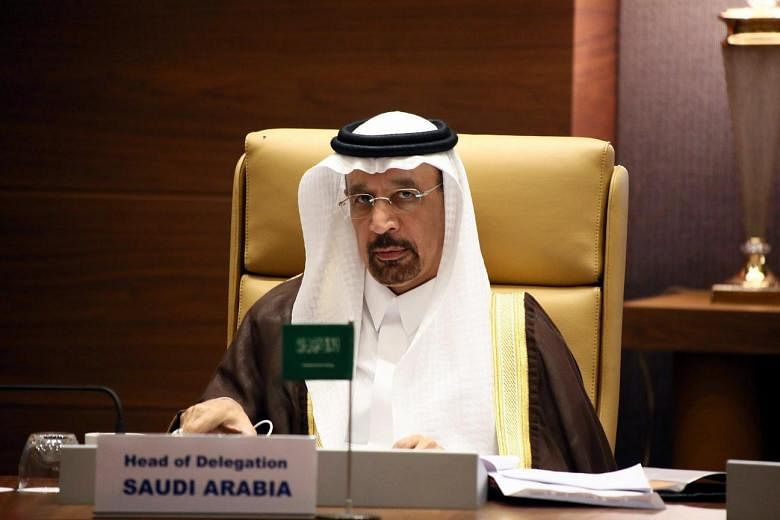SINGAPORE (Bloomberg) - Goldman Sachs Group Inc. said Opec's deal to cut output could add as much as US$10 a barrel to oil prices, though it remains skeptical along with other banks on how the accord will be implemented.
The plan to reduce production to a range of 32.5 million to 33 million barrels a day "will likely provide support to prices, at least in the short term," Goldman said in a report dated Sept. 28, but maintained its crude forecasts for 2016 and next year. Uncertainty in the market will persist in coming months, and output quotas could still be exceeded even if the proposal is ratified at a formal gathering in November, according to Goldman.
"Strictly implemented in the first half of 2017 and all else constant, the production quotas announced today should be worth US$7 a barrel to US$10 a barrel to the oil price," Goldman analysts including Damien Courvalin and Jeffrey Currie wrote in the report. "It has historically taken a fall in oil demand to ensure quota compliance, as in that case, production is forced lower by a decline in refinery intake around the world. This is not the case today with resilient demand growth." The Organisation of Petroleum Exporting Countries produces more than 40 per cent of the world's oil, so coordinated production cuts can have an immediate impact on global supply and demand balances. The group's history shows any action won't be as smooth as advertised. Members still have to sort out who will cut what, and the group usually overshoots its objectives by almost 5 per cent, according to Goldman, which would wipe out any effect from lowering targets.
There is no detail yet on the production quota levels for each country, which would be "the major dispute," Citigroup analysts including Ed Morse said in an e-mailed note dated Sept. 28. While individual country quotas may be decided at OPEC's meeting on Nov. 30, "this is still kicking the can down the road," he wrote in the report.
Citibank and Goldman both maintained their price forecasts. Citigroup sees oil trading between US$40 and US$50 a barrel through the end of the year, with Brent crude rising to a US$60 average in 2017. Goldman sees oil ending 2016 at US$43 a barrel and rising to US$53 next year.
An increase in prices could also prompt U.S. shale production to rebound, and gain market share at Ooec's expense, according to Citigroup. The American shale industry is the "clear winner" from the decision, Morgan Stanley analysts including Adam Longson said in a report dated Sept. 28.
U.S. shale producers should be incentivised by oil prices moving through the US$50-$60 range and above, witnessing sustained growth for several years, Morse wrote in the Citigroup report. "This is the dilemma OPEC faces in the shale era," Morse wrote.
While a cut in supply to 32.5 million barrels a day doesn't solve the oversupply immediately, it could potentially pull forward the global oil market rebalancing to as soon as early 2017, according to Morgan Stanley. At 33 million barrels a day, the rebalancing is likely in the second half of 2017, though "non-Opec supply response could put that timing at risk," the bank said in its report.
"The reality is that when non-Opec is growing, OPEC can't manage prices over the medium term," Morgan Stanley's Longson wrote in the note.

